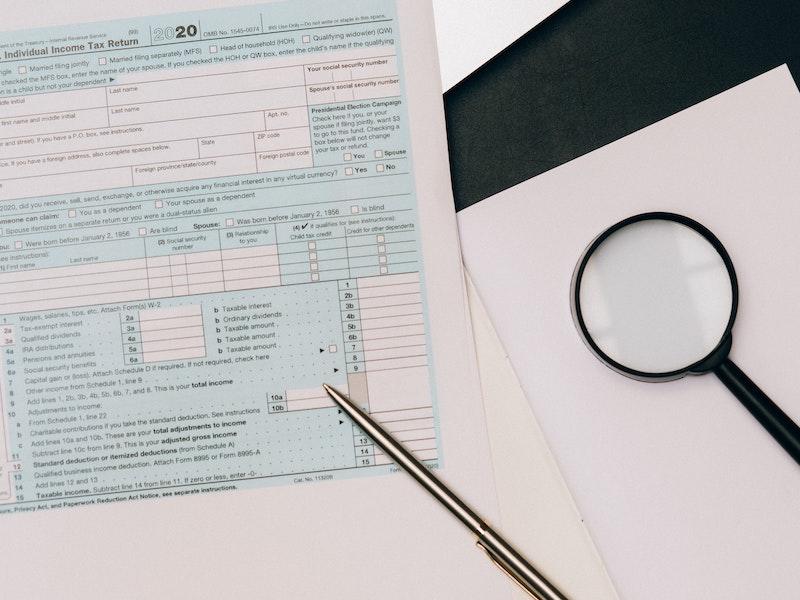
Internal Revenue Service (IRS) penalties and fees for late filing, late payment or other errors can add up quickly for taxpayers. According to a recent government report, in 2022 alone the IRS collected more than $98.4 billion in unpaid assessments and assessed nearly $23.8 billion in additional taxes for returns not filed on time1.
The IRS offers options to reduce or eliminate fees for your clients who may be facing these tax penalties, although recent data shows that many taxpayers or tax preparers don’t even realize if they qualify for relief from these fees.2
If you're an enrolled agent or CPA, understand how you can leverage your credential to help clients find relief from penalties. Learn about tax penalty abatement, who qualifies, and how to file so that you can offer even more value to your clients.
What is tax penalty abatement?
Tax penalty abatement is the forgiveness or reduction of additional fees, penalties or interest that a client has accumulated on their tax returns for errors such as failing to file or pay their taxes on time. The IRS will reduce these fees and penalties under specific circumstances.
Why is penalty relief important?
Tax penalty abatement can provide your clients with much-needed financial relief and is particularly important for those who are struggling financially or facing other challenges. As you navigate the rules and regulations surrounding tax abatements, make sure your clients are taking advantage of all available options.3
Types of tax penalty abatement
There are several types of tax penalty abatements, and the qualifications differ for each. The most common types are First Time Penalty Abatement (FTA) and Reasonable Cause.4
First Time Penalty Abate (FTA) and Administrative Waiver
An administrative waiver is the most straightforward and simple form of tax penalty abatement, requiring little-to-no paperwork. Some administrative waivers are automatically issued by the IRS in policy statements, news releases, notices, or other official IRS communications. For example, if new legislation takes effect late in the year without timely communication, the IRS may publish an administrative waiver issuing your client an automatic penalty abate. While no further action is required, your job as a tax service professional is to stay updated on all officialIRS publications and understand how they may affect your clients' situations.
On the other hand, the most common type of administrative waver is a First Time Penalty Abate (FTA). Often called a "get-out-of-jail-free card,"5 this simple penalty relief is available to taxpayers with an otherwise clean compliance history, who made a one-time filing mistake. Taxpayers who don’t file or make the proper payments to the IRS on time are most likely to use this option. To qualify, taxpayers must be current on filing returns, paying their tax bill (which can include still making payments on a payment plan), and must have had no penalties in the three prior tax years.
To file for this type of penalty abatement, you can either call the IRS to file verbally, send a written statement, or send Form 843 Claim for Refund and Request for Abatement. Often, the IRS automatically grants an FTA as long as eligibility is clear and valid.
Reasonable cause
The most flexible and widely used form of tax penalty abatement is "Reasonable cause." It is available to taxpayers who demonstrate that they did exercise ordinary business care and prudence, but factors beyond their control impeded their ability to comply with tax laws.6
Factors that qualify your clients as eligible for a tax penalty abatement due to reasonable cause include:
- Fires
- Natural disasters
- Civil disturbances
- Serious illness, death or unavoidable absence for the taxpayer or family
- Incorrect advice from a tax professional or the IRS
Statutory exception
Statutory exception is a type of tax penalty abatement that grants relief under certain provisions of the Internal Revenue Code. It is available if the taxpayer fails to comply with tax laws due to a statutory exception (exception to the law),7 such as:
- relying on incorrect advice from the IRS
- mailing a return on time that never reached the IRS
- living in a federal disaster area
- involvement in military operations in a combat zone
How to apply for tax penalty abatement
No matter which of the three tax penalty abatement categories your client is eligible to receive, you can apply for relief from the IRS by phone or in writing.
By phone
During the phone call, you must present the notice letter that your client received from the IRS, the penalty that you want the IRS to relieve, and why your client should receive a tax penalty abatement. Be sure to have on-hand the evidence that support your client's eligibility. The IRS agent will tell you during the phone call if your client's penalty relief is approved.
If the IRS cannot approve the relief over the phone, you can request penalty abatement for your client in writing.8
Using Form 843 "Claim for Refund and Request for Abatement."
When you apply using Form 843, you have the chance to send in physical documents that support your client's eligibility. The IRS will carefully review the documents against tax law and the penalty being charged, and send a response within about 60 days. However, the decision may take up to 3 months to completely process.
Key sections of Form 843 that you will fill out include:
- Taxpayer information (your client's information)
- Type of tax (employement, income, etc.) and the tax period
- Explanation of tax penalty abatement request and supporting documentation
- Signature
Appealing the decision
If the IRS denies your request for a client's tax penalty abatement but you still believe the client qualifies, you can appeal the decision within 30 days. The IRS will conduct an independent investigation, considering your client's case, tax regulation, and evidence provided.
You will likely be contacted during the appeal process, so you must be ready to discuss your client's case in detail, presenting any new information or evidence that will help receive a positive tax penalty abatement decision.
Learn more about tax with CPE from Becker
Becker helps you stay up-to-date and well-informed on penalty abatements as well as both new and existing tax laws and guidelines with CPE courses and CE for enrolled agents that expand your expertise. For even more tips on tax penalty abatement, check out our credit-earning course, Penalty Abatement: Inside Secrets to Winning Every Time.
Get the best value in continuing professional education with a Prime CPE subscription and access over 700 on-demand courses, 1,000 live webcasts annually, and weekly CPE podcasts.
1.Internal Revenue Service. "Collections Activities, Penalties and Appeals." IRS, 2023, www.irs.gov/statistics/collections-activities-penalties-and-appeals.
2.Brodeur, J. (2022). "First-Time Abatement." American Bar Association. www.americanbar.org/groups/taxation/publications/abataxtimes_home/22winspr/22winspr-prp-brodeur-first-time-abatement/.
3. "Tax penalty relief amid coronavirus pandemic." (2021, February). Journal of Accountancy. www.journalofaccountancy.com/issues/2021/feb/tax-penalty-relief-amid-coronavirus-pandemic.html
4. "Penalty relief due to first-time abate or other administrative waiver." (n.d.). Internal Revenue Service. www.irs.gov/payments/penalty-relief-due-to-first-time-abate-or-other-administrative-waiver
5. Abating IRS penalties. (2017, January). Journal of Accountancy https://www.journalofaccountancy.com/issues/2017/jan/abating-irs-penalties.html.
6. Penalty relief for reasonable cause. (n.d.). Internal Revenue Service. https://www.irs.gov/payments/penalty-relief-for-reasonable-cause.
7. United States. Dept. of the Treasury. Internal Revenue Service. “Penalty Relief Due to Statutory Exception.” IRS.gov, 2023, https://www.irs.gov/payments/penalty-relief-due-to-statutory-exception.
8. Internal Revenue Service. “Penalty Relief.” IRS.gov, 2023, https://www.irs.gov/payments/penalty-relief.








